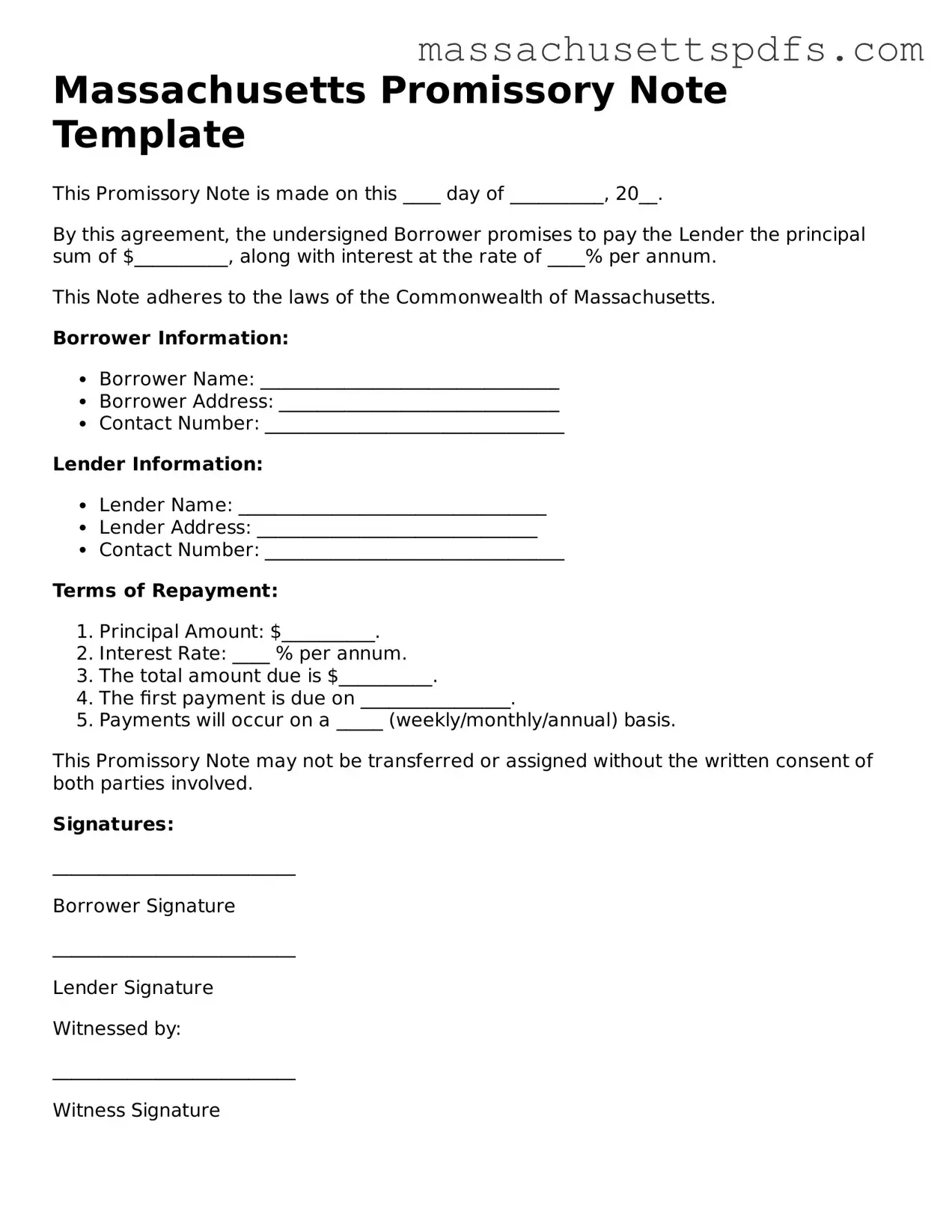Attorney-Approved Massachusetts Promissory Note Document
A Massachusetts Promissory Note is a legal document that outlines a borrower's promise to repay a specified amount of money to a lender under agreed-upon terms. This form serves as a crucial record of the loan agreement, detailing the repayment schedule, interest rate, and any collateral involved. Understanding how to properly fill out this form is essential for both lenders and borrowers to ensure clarity and protection in financial transactions.
Ready to complete your Massachusetts Promissory Note? Click the button below to get started!
Launch Editor Here
